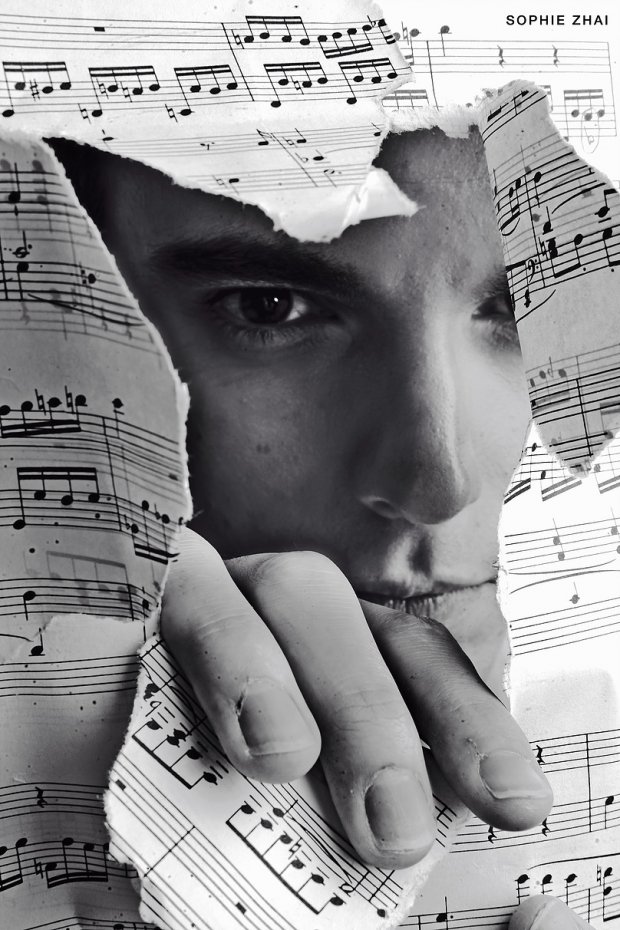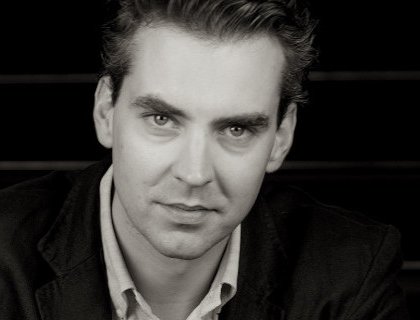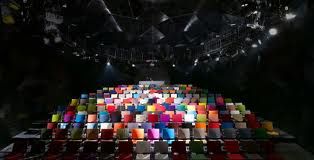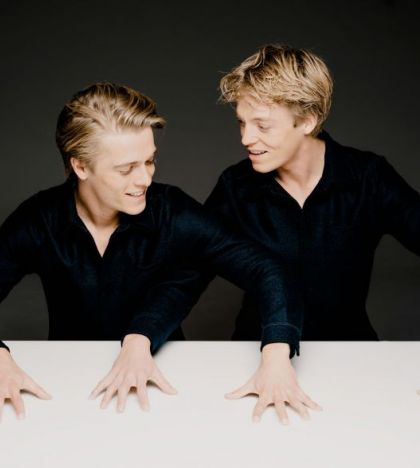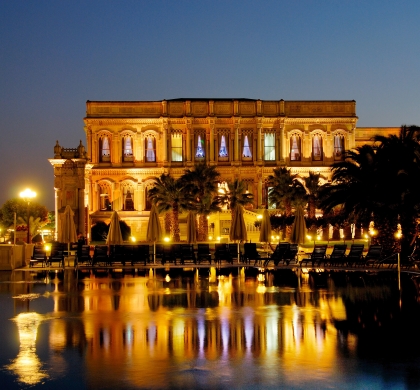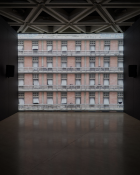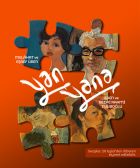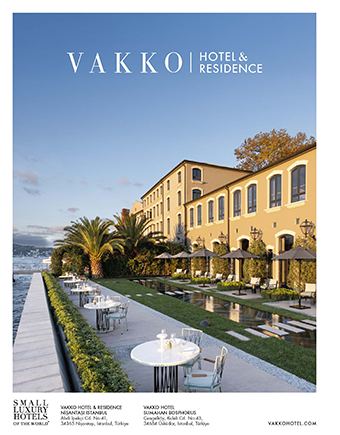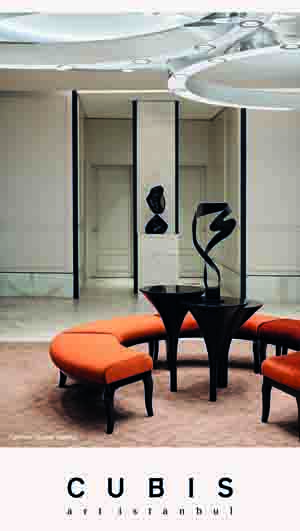The latest in the 2018–19 series of İstanbul Recitals was given by the American pianist Andrew Tyson at the Seed, the concert hall attached to the Sakıp Sabancı Museum in Emirgan, on Friday February 15. As was the case with last month’s recital, the weather was cold, wet and windy. Stepping off the boat at the quayside in Emirgan, my companion and I were nearly blown sideways into the coast road as the wind lashed the spray off the surging waves of the Bosphorus. Having avoided this fate and regaled ourselves at a nearby café with figgy pudding (in the case of my companion) and a milkier variety of dessert (in mine), we sought the warmth and comfort of the concert hall. Taking our seats we were most gratified to see that Ms Nazan Ceylan, co-founder and organiser of the recitals, along with Mr Mehmet Şükûn (son of the late Kamil Şükûn, her co-founder), had once again granted us a grandstand view of the piano.
Mr Tyson, born in 1986 and trained at the University of North Carolina, the Curtis Institute of Music in Philadelphia and the Juilliard School in New York, won first prize at the Concours Geza Anda in 2015. In addition he was a finalist in the Chopin Competition in Warsaw in 2010 and the Leeds Competition in 2012, receiving the orchestra’s award in this latter event. He began his recital in Emirgan with a selection of works from the suites of François Couperin (1668–1733).
The titles of these pieces are an entertainment in themselves: Les barricades mistérieuses, La muse Plantine, Le dodo ou l’amour au berceau and Le tic-toc-choc ou Les maillotins. One online dictionary informs us that a maillotin was a member of a group of insurgents who, armed with lead maces (a maillet being a mace or mallet), led a riot in Paris against King Charles VI in 1382. Personally, I feel this explanation is less plausible than that of one commentator who surmises that as maille means ‘stitch’, maillotin may in fact refer to stitches, and the tic-toc-choc to the clacking of knitting needles. Be all this as it may, this website seems absolutely convinced that the maillot were a famous family of rope-dancers. Take your pick of this bizarre bunch.
I was immediately struck by how modern this French Baroque composer can sound today, given a degree of sensitivity to the possibilities inherent in his music. The trills and ornaments that are a major feature of his style actually came across, in Andrew Tyson’s interpretation, as an indicator of originality (albeit a somewhat eccentric one) rather than as an annoying foible and an unnecessary distraction – which is how, I freely admit, I used to view them. I was converted to Couperin by this performance. The pianist made the most of every opportunity to bring out counter-melodies in the lower parts, and revealed himself to have a superlative sense of timing, the result being both polished and tasteful – taut but at the same time subtle. I noticed that the somewhat ‘artistic’ hand movements he indulges in at the end of phrases he has particularly enjoyed do not indicate a loss of control due to emotional over-involvement. Though he does indeed wring the last drop of nectar out of the music, his approach is invariably measured, and he always stops well short of abusing poetic licence.
Here is a link to a performance of Les barricades mistérieuses from the Guardian website with programme notes by Tom Service below it. I can find no satisfactory explanation, even on French websites, as to what exactly these ‘mysterious barricades’ are. Apparently Couperin himself never gave out any clues.
The next three links are to La muse Plantine (played on an Erard-Flügel piano dating from 1875), to Le dodo ou l’amour au berceau played on a clavecin, and to Le tic-toc-choc, ou Les maillotins played on an ordinary piano by Grigory Sokolov, a first-class Russian pianist.
I urge the reader to listen to Messiaen’s organ music as well as what he wrote for piano. He was, after all, an organist by profession, and his understanding of organ registers comes across very clearly even in his piano music. In the two videos below, I have thus followed a full performance of Vingt regards by Yvonne Loriod (who co-operated with the composer as a performer of his works, and eventually became his wife) with a video of an organ piece by the name of L’Ascension, accompanied by the score.
Perhaps I am prejudiced by my own failure to play one of Liszt’s fearsome piano Etudes during my twenties – despite practising until the blood ran out of my fingertips. But there is clearly a place for him in any pianist’s repertoire, especially if the intention is to impress. (There, now, I really must resist the temptation to go after those low-hanging sour grapes!) Anyway, here is a performance of Vallée d’Obermann by Evgeny Kissin.
And so to the last item in Andrew Tyson’s recital, Chopin’s Piano Sonata No. 3 in B minor (the last of his piano sonatas), written in 1844. It was a flawless performance, particularly pleasing in that the pianist paused for only a second or two between movements. Come to think of it, he began nearly every piece before the initial applause had died away. I much appreciated this let’s-get-down-to-business approach, though many audience members showed themselves up by failing to notice he had started playing, and therefore that it was time to leave off clapping.
In the magnificently unhurried slow movement, Mr Tyson’s talent for lyricism stood him in good stead. This was the part, above all, in which I truly appreciated his highly expressive but invariably disciplined musicianship. And it was the pianist’s combination of what has been called ‘poetry’ by some critics with a never-failing underlying control which was the feature of his playing I found most satisfying. He is not a wildly original stylist, and basically traditional in his interpretative approach, but he nevertheless succeeds in communicating the impression of being an unrestrained romantic. I really don’t know how he does it.
And now a description of the work by James Reel, followed by a video of an excellent performance of the sonata by Andrew Tyson himself (complete with close-ups of his hands):
As a taster for the talents of Seong-Jin Cho, who on June 11 is to perform at the opening concert of this summer’s İKSV İstanbul Music Festival, with the Tekfen Philharmonic Orchestra, here is a performance by him of the Chopin sonata’s last movement.
To end with (but not quite), here is a short account of the origins of the name ‘Tyson’ – a surname which, thanks to my Dyson ancestors, I share with the pianist who entertained us on February 15. The initial T and D in the two names, both being plosives (that is, ‘stop consonants’ pronounced by blocking the vocal tract so that airflow is stopped), are of course interchangeable from the point of view of derivation, being but voiced and unvoiced versions of the same sound. Two early Christian saints by the name of Dionysius and Dionysia were apparently popular in the West Riding of Yorkshire in the Middle Ages, and their names were commonly shortened to ‘Di’. Both ‘Tyson’ and ‘Dyson’, therefore, mean ‘son of Dionysius or Dionysia’ – ‘Di’s son’. The gravestones in the churchyard at Linthwaite, near Huddersfield, bear the names of quite a number of my Dyson forebears.
The problem for me has always been not that despite my Yorkshire roots I was born in Lancashire, but that a certain James Dyson invented a rather clever way of designing vacuum cleaners. A problem? Surely not, you may say. But in the 1990s, when his domestic appliances achieved worldwide popularity, I would receive telephone calls from people asking whether I was willing to appoint them as Turkish distributors for the Dyson device. This precipitated a crisis of conscience in me, and the temptation to overstep the bounds of probity was strong. However – foolishly, perhaps – I always disabused my interlocutors of the impression that I was a relative of Sir James.
Finally, I must add that Andrew Tyson is quite clearly on top of every aspect of his game and is a highly accomplished musician who fully deserved his invitation to Emirgan. My companion, accustomed to Moscow standards of performance, agreed with me. I must also point out that the Steinway at the Seed is a very fine instrument indeed, and that especially in the higher of the two octaves above middle C it has a timbre that somehow manages to be cloudy, like a dry-tasting red wine (in Turkish, the word for this would be buruk), and bell-like at the same time. My nearly-namesake Andrew Tyson clearly appreciated this feature, and made the most of it. Nazar değmesin – may the Evil Eye not touch it, or him.

